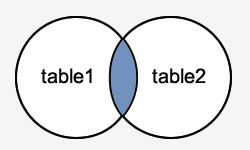SQL Server: SELECT TOP Statement
This SQL Server tutorial explains how to use the SELECT TOP statement in SQL Server (Transact-SQL) with syntax and examples.
Description
The SQL Server (Transact-SQL) SELECT TOP statement is used to retrieve records from one or more tables in SQL Server and limit the number of records returned based on a fixed value or percentage.
Syntax
The syntax for the SELECT TOP statement in SQL Server (Transact-SQL) is:
SELECT TOP (top_value) [ PERCENT ] [ WITH TIES ] expressions FROM tables [WHERE conditions] [ORDER BY expression [ ASC | DESC ]];
Parameters or Arguments
- TOP (top_value)
- Returns the top number of rows in the result set based on top_value. For example, TOP(10) would return the top 10 rows from the full result set.
- PERCENT
- Optional. If PERCENT is specified, then the top rows are based on a percentage of the total result set (as specfied by the top_value). For example, TOP(10) PERCENT would return the top 10% of the full result set.
- WITH TIES
- Optional. If the WITH TIES clause is specified, then rows tied in last place within the limited result set are returned. This may result in more rows be returned than the TOP parameter permits.
- expressions
- The columns or calculations that you wish to retrieve.
- tables
- The tables that you wish to retrieve records from. There must be at least one table listed in the FROM clause.
- WHERE conditions
- Optional. The conditions that must be met for the records to be selected.
- ORDER BY expression
- Optional. It is used in the SELECT TOP statement so that you can order the results and target those records that you wish to return. ASC is ascending order and DESC is descending order.
Example - Using TOP keyword
Let's look at a SQL Server example, where we use the TOP keyword in the SELECT statement.
For example:
SELECT TOP(5) employee_id, last_name, first_name FROM employees WHERE last_name = 'Anderson' ORDER BY employee_id;
This SQL Server SELECT TOP example would select the first 5 records from the employees table where the last_name is 'Anderson'. If there are other records in the employees table that have a last_name of 'Anderson', they will not be returned by the SELECT statement.
You could modify this example to include the WITH TIES clause as follows:
SELECT TOP(5) WITH TIES employee_id, last_name, first_name FROM employees WHERE last_name = 'Anderson' ORDER BY employee_id;
The WITH TIES clause would include rows that may be tied in last place within the limited result set. So if the 5th top record is a tie, then all records in this tie position would be returned by the SELECT TOP statement. This will result in more than 5 records being returned.
Example - Using TOP PERCENT keyword
Let's look at a SQL Server example, where we use the TOP PERCENT keyword in the SELECT statement.
For example:
SELECT TOP(10) PERCENT employee_id, last_name, first_name FROM employees WHERE last_name = 'Anderson' ORDER BY employee_id;
This SQL Server SELECT TOP example would select the first 10% of the records from the full result set. So in this example, the SELECT statement would return the top 10% of records from the employees table where the last_name is 'Anderson'. The other 90% of the result set would not be returned by the SELECT statement.
You could modify this example to include the WITH TIES clause as follows:
SELECT TOP(10) PERCENT WITH TIES employee_id, last_name, first_name FROM employees WHERE last_name = 'Anderson' ORDER BY employee_id;
The WITH TIES clause would include rows that may be tied in last place within the limited result set. So if the last position in the SELECT TOP(10) PERCENT record set is a tie, then these tied records would be returned by the SELECT TOP statement. This will result in more than 10% of the full record set being returned.

No comments:
Post a Comment